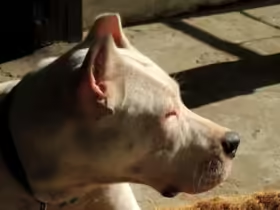Maintaining a healthy weight is crucial for your pet’s overall well-being. Obesity in pets can lead to various health issues, including diabetes, arthritis, and decreased lifespan. Helping your pet lose weight involves a combination of proper diet, regular exercise, and ongoing management. Here’s a comprehensive guide on how to help your cat or dog achieve and maintain a healthy weight.
1. Understanding Pet Obesity
Why Weight Management Matters
Excess weight can lead to serious health problems, including:
- Diabetes: Increased fat can affect insulin production and glucose metabolism.
- Joint Problems: Extra weight puts stress on joints, leading to arthritis and mobility issues.
- Heart Disease: Obesity can lead to cardiovascular problems.
- Decreased Lifespan: Overweight pets often have a reduced life expectancy.
Identifying Obesity in Pets
- Visual Cues: Check for a round, sagging abdomen or a lack of a defined waist.
- Physical Assessment: You should be able to feel your pet’s ribs without pressing hard. If you can’t, your pet may be overweight.
- Consult Your Vet: Your veterinarian can provide a body condition score and help determine if your pet is overweight.
2. Creating a Weight Loss Plan
2.1. Consult Your Veterinarian
Why It’s Important:
- Health Assessment: Your vet will assess your pet’s overall health and determine if there are any underlying conditions contributing to weight gain.
- Tailored Plan: They can help create a weight loss plan tailored to your pet’s specific needs.
Questions to Ask Your Vet:
- What is my pet’s ideal weight?
- What type of diet is recommended?
- How much exercise should my pet get?
2.2. Dietary Adjustments
Choosing the Right Food:
- Quality Food: Opt for high-quality, nutritionally balanced pet food that is specifically formulated for weight management.
- Portion Control: Measure your pet’s food to avoid overfeeding. Follow the feeding guidelines provided by your vet or on the pet food packaging.
- Low-Calorie Treats: Use low-calorie treats or consider offering vegetables like carrots or green beans as snacks.
How to Implement Dietary Changes:
- Gradual Transition: Slowly transition to a new diet to prevent digestive upset. Mix a small amount of the new food with the old food, gradually increasing the proportion of the new food.
- Monitor Weight: Regularly weigh your pet to track progress and make necessary adjustments.
2.3. Exercise Routines
Exercise for Dogs:
- Daily Walks: Aim for at least 30 minutes of walking each day. Increase the duration gradually if your dog is not used to regular exercise.
- Playtime: Engage your dog in activities like fetch, tug-of-war, or agility training to burn calories and keep them active.
- Interactive Toys: Use toys that encourage movement, such as treat-dispensing toys or puzzle toys.
Exercise for Cats:
- Play Sessions: Use toys like feather wands, laser pointers, or catnip toys to encourage your cat to move and play.
- Vertical Space: Provide climbing structures, such as cat trees or shelves, to encourage climbing and exploration.
- Interactive Feeders: Use feeders that require your cat to work for their food, which can help increase their activity level.
2.4. Behavior and Training
Positive Reinforcement:
- Reward Good Behavior: Use positive reinforcement to encourage your pet’s new exercise routine. Reward them with praise or a small treat for participating in activities.
- Avoid Overfeeding: Refrain from using food as a reward too frequently. Instead, use non-food rewards like extra playtime or affection.
Managing Begging and Overeating:
- Consistent Feeding Schedule: Stick to a regular feeding schedule to prevent constant begging.
- Avoid Table Scraps: Do not feed your pet from the table or give them scraps. This can contribute to unhealthy weight gain.
3. Monitoring Progress
Regular Check-Ups
- Vet Visits: Schedule regular vet check-ups to monitor your pet’s weight and overall health.
- Adjustments: Based on progress, your vet may suggest adjustments to your pet’s diet or exercise routine.
Tracking Weight
- Home Scales: Weigh your pet regularly at home if possible, or use a scale at the vet’s office.
- Body Condition Score: Keep track of changes in your pet’s body condition score to gauge progress.
4. Troubleshooting Common Issues
Lack of Progress
- Review Diet: Ensure you are not inadvertently giving extra calories or treats.
- Increase Exercise: If progress stalls, try increasing the duration or intensity of exercise.
- Consult Your Vet: If you encounter challenges, consult your vet to rule out any health issues or receive further guidance.
Behavioral Challenges
- Persistence: Be patient and consistent with dietary and exercise changes. Behavioral adjustments take time.
- Professional Help: If your pet is resistant to changes or shows signs of distress, consider consulting a pet behaviorist or trainer.
5. Long-Term Maintenance
Sustainable Habits
- Maintain Routine: Continue with the established diet and exercise routine to prevent weight regain.
- Regular Monitoring: Keep regular vet appointments and monitor your pet’s weight to ensure they remain at a healthy weight.
Healthy Lifestyle
- Balanced Diet: Continue providing a balanced diet suitable for your pet’s weight maintenance needs.
- Active Lifestyle: Encourage regular physical activity to keep your pet fit and healthy.
6. Conclusion
Helping your pet lose weight requires a combination of dietary adjustments, regular exercise, and consistent monitoring. By working closely with your veterinarian and implementing a structured plan, you can help your cat or dog achieve and maintain a healthy weight. Remember, the goal is to improve your pet’s overall well-being and quality of life, making their weight loss journey a positive experience for both of you.
Here’s to a healthier and happier pet!











Leave a Reply